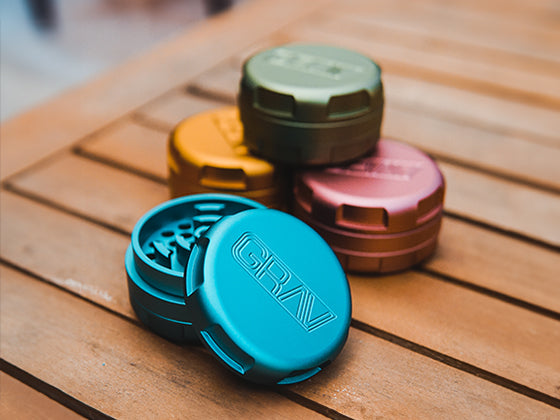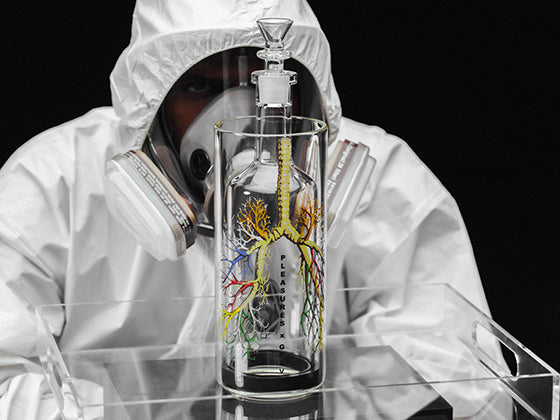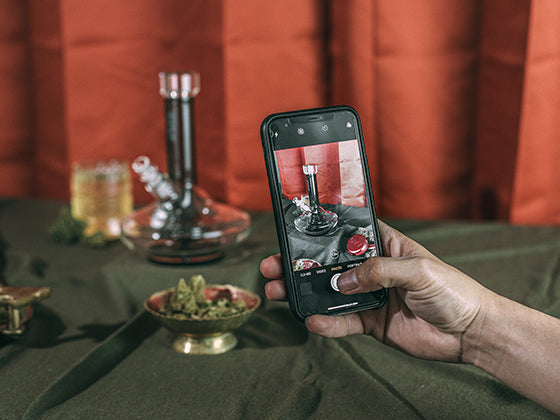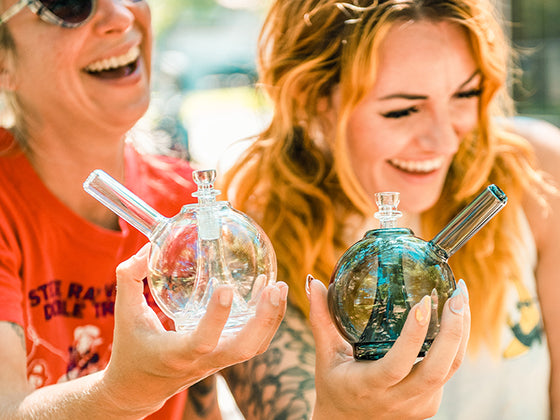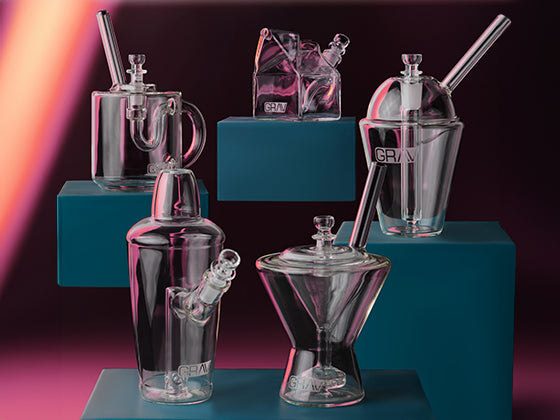A Pleasant Dystopia: Revisiting 1998’s Pleasantville
Back in 1998, a little film called Pleasantville hit theaters. Starring a pre-Spiderman Tobey Maguire and pre-Legally Blonde Reese Witherspoon, the film follows two teens as they enter the perfect world of a 1950s sitcom and proceed to inject a much-needed dose of color into this drab fictional existence.
As fans of stories that expand our minds and encourage us to view the world differently, we’re big fans. The movie is beautifully filmed, a treat to watch, and has some important takeaways. Plus, we’ve got color on the brain right now, with the new releases of our Sip Series and Pocket Bubbler collections in color for the very first time.

So here’s a GRAV take on Pleasantville. Warning: there are spoilers ahead. (Also the movie came out 22 years ago, so…)
The Plot of Pleasantville
In case you haven’t seen the movie, here’s a basic rundown.
Teenage siblings David (Tobey Maguire) and Jennifer (Reese Witherspoon) are wildly different. Jennifer is obsessed with social status and popularity, while David is shy and introverted. Rather than spend his time in the real world, he prefers to watch his favorite show, a 1950s sitcom called Pleasantville where it’s always 72 degrees, it never rains, and the high school basketball team always wins.
Through the machinations of a magical TV repairman, David and Jennifer get sucked into the black-and-white show, replacing the two children of the show’s main family. In the characters of Bud and Mary Sue, the pair do their best to fit in. But as the teens share concepts that are normal to them but foreign to the townspeople, they begin to change the people and the town itself.
Jennifer introduces the concept of sex to the school, which leads to many of the kids spontaneously changing from black and white to color. David and Jennifer share what they know of books they’ve read, and the books in the library, previously blank, begin to fill in. Betty, Bud and Mary Sue’s mother, has always been a self-denying housewife. But when she discovers self-pleasure, she turns color and causes a tree to burst into flames. (Prior to this, fire didn’t exist in the world of Pleasantville.)
The fathers of the town view all this change as a threat to their pleasant way of life. The mayor institutes a ban on “colored” people, loud music, library books, and colorful paint. To protest, David and Billy, an amateur artist who runs the local soda fountain, paint a bright colorful mural, which leads to their arrest. David takes a stand for passion and freedom from repression, leading the rest of the townspeople to “colorfy” as well.

Pleasantville is changed forever. David, with new-found self-confidence, is ready to return to the real world. Jennifer, freed from the prison of societal expectation and the restrictions she placed on herself, chooses to remain in the television world to go to college and cultivate the intelligence she had ignored up to now.
So what does it all mean?
Perfection Is An Illusion
Before David enters the world of Pleasantville, it is “perfect.” From the weather to the people to the small problems that are easily wrapped up in each half-hour episode, there is nothing amiss in this ideal world. (David doesn’t seem to notice or care that there are exactly zero people of color, LGBT+ people, or anyone who operates outside of strict gender norms.)
When David and Jennifer are brought into the world of the show, they learn how much as to be given up to achieve this surface-level utopia. The books are blank. There is no passion, physical or otherwise. There is no travel or great works of art to broaden one’s horizons. Every day is the same.
This homogeny is flat and uninspired. The people have no release and no forms of self-expression. When David and Jennifer begin to shake things up, the teens in town are desperate for change. This “perfect” world is anything but.
While we may live in a more colorful world, we can certainly relate. Real life, with its work, chores, and obligations, can feel awfully gray. Many of us turn to cannabis to bring a little color to our daily routines. It can provide a moment of calm and clarity, fueling our inspiration and helping us to create and innovate—concepts foreign to the show’s characters.
It’s a shame there are no dispensaries in Pleasantville.
Art is Transformative
Some of the people in Pleasantville find their release from repression through sex. But others, like Billy and Jennifer, become “colorized” through art and literature. It’s not until Jennifer sends her black-and-white boyfriend away and instead stays in to read Lady Chatterley’s Lover by D.H. Lawrence that she turns to color herself.
When David brings Billy a colorized book of modern art from the library, he’s immediately inspired. “Must be awful lucky to see colors like that. I bet they don't know how lucky they are,” he says. And to protest the harsh restrictions on music and books, Bud and Billy paint a vibrant mural on the side of a building.
Art is a powerful force for social and personal change. In Pleasantville’s art-starved world, books and paintings inspire the people to find their own higher selves.
The Script Isn’t Always Right
When he first enters the world of the TV show, David desperately tries to follow the script and to keep Jennifer in check. He doesn’t want to do anything that will disrupt the show’s narrative.
But as the town begins to change around him, and as he becomes a part of that change, he releases his grip on the way things are “supposed” to be. He has to accept that the way things are written isn’t necessarily better. By freeing the townspeople of their repression, he and Jennifer help them to decide for themselves who they want to be and how they want their lives to look.
After he returns home, David encounters his real-life mother in tears over the state of her own life. He reassures her that there is no perfect house, no perfect car. There is no “right way” to be or to live.

For so long, cannabis enthusiasts were on the fringe, trying to prove to the mainstream that the plant has medicinal and recreational value. They lived outside the script, trying to create their own narrative in the face of overwhelming opposition. After decades going against the grain, cannabis is finally being seen for the valuable plant medicine and aid to creativity and relaxation that it is.
So we say hurray to throwing out the playbook and deciding for ourselves what we want our lives to look like.
Progress is Inevitable
Once the first red rose appears in Pleasantville, there’s no stopping the colorization of the town. Soon the teens, then the adults, then the rest of the town are vibrant and vivid, in spite of the attempts to reverse it.
Once change begins, there’s no way to stop it. Whether it’s civil rights, gay marriage, or the legalization of cannabis, once one domino falls the rest are very happily sure to follow. No amount of book bannings, absurd “Don’t Say gay” laws, and fear-mongering smear campaigns can put an end to progress.

Colorize Yourself
In the real world, freedom doesn’t come with such a stark visual cue as going from black-and-white to color (unfortunately). But the idea holds true. The more we explore, through art, books, travel, and more, the more open our minds become.
And a little cannabis doesn’t hurt.


